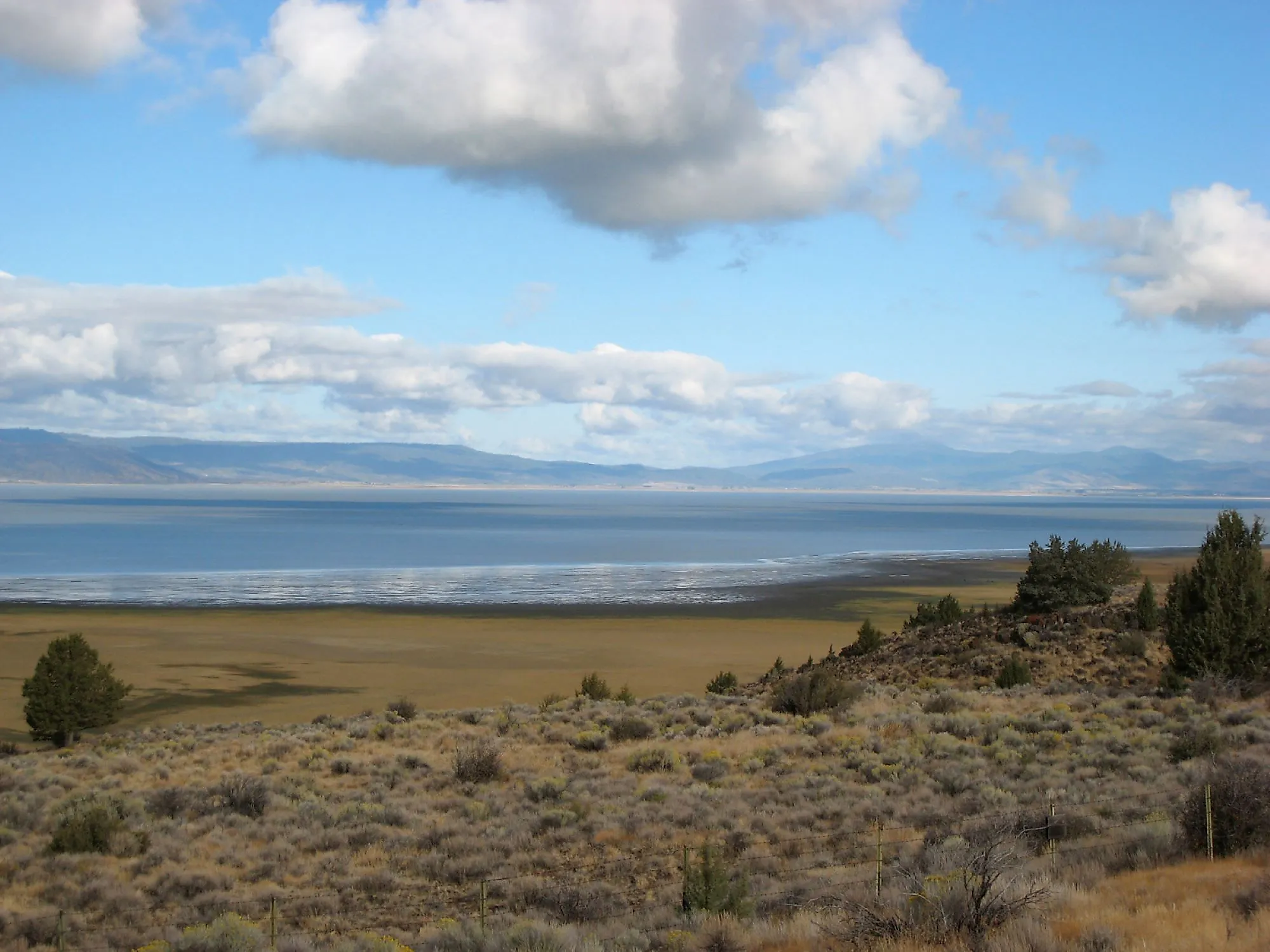
Goose Lake Valley
Goose Lake Valley is situated in the northwestern corner of the Great Basin in the United States. The Great Basin, an extensive range of land with water that connects to no ocean or sea, spans most of Nevada and Utah and parts of California and Oregon. The Goose Lake valley surrounds the isolated Goose Lake on the Oregon-California border.
Geography Of Goose Lake Valley

Goose Lake Valley is situated in both Lake County, Oregon, and Modoc County, California. The largest city in the area is Lakeview, Oregon, a town with a population of about 2400 inhabitants. The nearby small towns of Fairport and Willow Ranch sit beside Goose Lake itself. Warner Mountain and Fremont Mountain surround the Valley. The Valley is part of the Oregon high desert, which has warm summers and cold winters. The heat can reach temperatures of 32 degrees celsius. Despite the warm temperatures, the area is susceptible to high amounts of rain and snow.
Goose Lake was formed due to a process called faulted blocking. Faulted blocking is when tectonic movements create stresses in the crust of the Earth. The Goose Lake Valley is considered an alluvial basin formed by the many million-year-old lava flows. There is also a belief that the entire valley was once a lake, but the water levels have since significantly decreased, leaving the current 24-foot Goose Lake in its place.
Flora And Fauna Of Goose Lake Valley
The valley is home to various habitat zones, which many kinds of animals can call home. Goose Lake Valley has not only lakes but grasslands, marshes, and forested areas. Some of the most common animal sightings tend to be black bears, pronghorn, elk, cougars, rainbow trout, coyotes, and jackrabbits. The Goose Lake Valley is on the migration route of several water birds, such as swans, ducks, and geese, to and from Canada and Mexico. There is an ongoing issue among Oregon and California agriculturalists, as cattle grazing has damaged bird breeding grounds. The habitats of these birds are being compromised by increased agricultural activity from Oregon and California farmers.
Brief History Of Goose Lake Valley
The area was utilized by many Native American nations before European settlement and was named Newapshki by the Klamath Nation. John Work, a Hudson Bay Company trapper, was the first documented European explorer to Goose Lake Valley. Work recorded his visit in his journal in 1832. Travelers from the eastern United States frequently passed through the valley on the Applegate Trail in search of supposed greener pastures in the west. The mid to late 1800s saw the Goose Lake Valley host various battles and skirmishes between settlers and Native American nations. When peace was agreed upon in the 1870s, settlements in and around the Goose Lake Valley became more hospitable. There was also a dispute between settlers and the most powerful corporation in the area at the time, the California and Oregon Land Company. During the 1860s, the California and Oregon Land Company essentially held the Goose Lake Valley hostage as it had purchased the land and prevented settlers from establishing their own ranches and farms. The US Supreme Court eventually ruled in favor of the company, further stifling population growth in the valley. Today, Goose Lake Valley tends to be of the lesser populated areas in both Oregon and California. Furthermore, most of Goose Lake Valley is for agricultural use in the private sector. Agriculture is a primary source of income in the Goose Lake Valley, alongside the lumber industry. The US government also runs a recreational area here. The Goose Lake State Recreation Area is under the jurisdiction of the Oregon Parks and Recreation Department. This space is for activities such as hiking, hunting, athletics, sightseeing, camping, and community gatherings.











